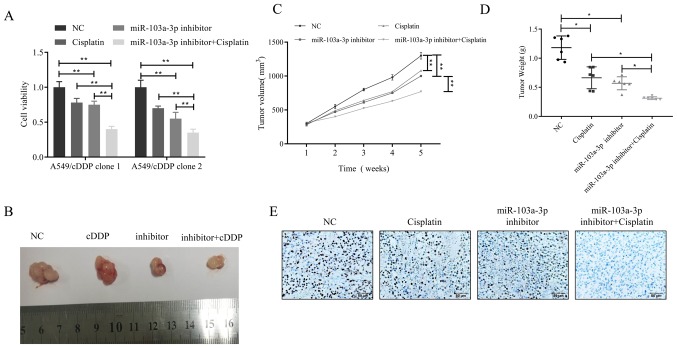Figure 6.
Inhibition of miR-103a-3p enhances the sensitivity of cisplatin-resistant NSCLC cells to cisplatin treatment in vivo. (A) A combination of miR-103a-3p inhibitor and cisplatin treatment synergistically inhibited A549/cisplatin cell viability. A549/cisplatin cells were transfected with negative control oligonucleotides or miR-103a-3p inhibitor for 24 h. Cells were then reseeded in a 96-well plate. After 12 h of seeding, cells were treated with or without 10 µg/ml cisplatin for 48 h. (B) Xenograft tumor morphology. (C) A combination of miR-103a-3p inhibition and cisplatin treatment synergistically suppressed tumor growth in A549/cisplatin xenograft models. (D) Tumor weight. At the end of experiments, tumors were collected, and the weight was measured. miR-103a-3p inhibitors combine cisplatin treatment synergistically suppressed tumor weight compare to other groups. (E) Immunohistochemical analysis of Ki-67 derived from xenograft model tumors (magnification, ×100). miR-103a-3p inhibitors combine cisplatin treatment could suppress the expression of Ki-67. *P<0.05 and **P<0.01 with comparisons indicated by lines. miR, microRNA; NSCLC, non-small cell lung cancer.

